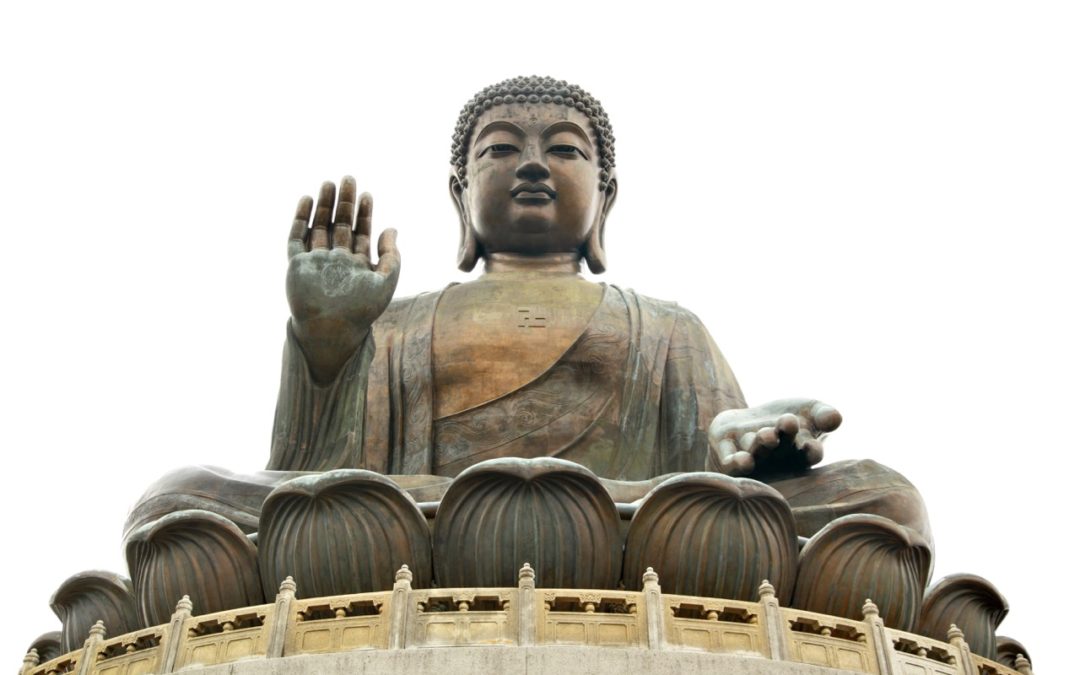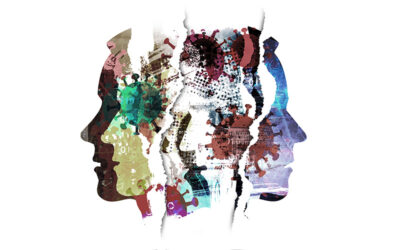People are talking about mindfulness as if it’s the latest fashion trend: mindful eating, mindful communication, mindful movement, even mindful business management. The explosion of books, CD’s and videos on the subject now includes weekend seminars and lengthy meditation retreats. Leaders of this new field articulate the merging of mindfulness, technology, and ancient wisdom traditions to rapt audiences. Academies are dedicated to its study. An industry has been born.
But what exactly is mindfulness?
According to Jon Kabat-Zinn, a well known expert in the field, “mindfulness means paying attention in a particular way; on purpose, in the present moment, and nonjudgmentally.” In this mental state, one can release one’s mind from the weight of past actions and thoughts as well as from worries about the future. Each person can experience life fully and deeply, right now.
Historical Origins
Twenty five hundred years ago, an Indian Prince named Siddhartha Gautama left the protected confines of his palace, seeking answers to his most profound questions about life. Why do we get sick and die? What is the nature of joy and happiness, of sorrow and pain? Who are we? How should we live?
At his moment of enlightenment, Siddhartha realized that life itself was suffering, and that this suffering had a cause. The cause, he saw, was rooted in our attachment to transient things. But he also realized suffering could be eased by following what he called the “middle path.” This was a way of living between the extremes of excessive self-indulgence (hedonism) and excessive self-denial (asceticism).
These were the Four Noble Truths and became the foundation of the religion known as Buddhism (after the Sanskrit word buddha, or “enlightened one”).
One method used to achieve this detachment is meditation. By focusing upon one’s breath, a ritual phrase (called a mantra), or musical notes, a person can release him or herself from the ego attachments that keep us trapped in the ongoing state of suffering that Buddha described. With practice, the relentless chatter in our heads–“monkey mind”– begins to slow down. One can breathe into the silent spaces between words, achieving a state of peaceful calm.
But Buddhism is more than just the resolution of suffering through meditative contemplation. Buddhism is also a religion, replete with gods, dogma and a doctrine of reincarnation; a religion where people spin prayer wheels, carry mallas of prayer beads, and worship relics believed to be the hair and teeth of the historical Buddha.
As the religion moved through space and time, it absorbed the characteristics of the tribes and countries it entered. The teachings of Siddhartha, also known as the Buddha, eventually spread south and east to Burma, Thailand, Sri Lanka, Cambodia, and Laos. Carried by itinerant teachers, it took root in Tibet, China, Korea, and Japan.
Along with focusing on Siddhartha himself, many Buddhist centers began to include worship of bodhisatvas: enlightened beings (often considered saints) who refuse release from the cycle of birth, death and re-birth, choosing instead to be reborn again and again until all sentient beings are liberated from suffering. The fundamental tenets of the Buddha’s original teachings, however, always remained at the center of these variations.
During the 1950s and 1960s, Buddhism washed ashore in America. The ancient religion found fertile ground in a country receptive to fresh ideas. Material prosperity and stifling conventionality pushed many in the young generation to search for new sources of meaning in a world where the good life was defined by material success. At the same time, the Vietnam War raged on, further undermining faith in western modes of thought and action. Restless, youthful eyes were turned eastward.
And from the far east came waves of smiling Buddhist monks, ancient texts in hand. They opened up institutes, meditation centers, and printing presses to spread the word.
The Science Buddha
Among them was the affable Dalai Lama. Fascinated by science, he presented Tibetan Buddhism as a belief system that could provide spiritual satisfaction, while it satisfied scientific rationality.
The Dalai Lama and his cadre of monks and nuns calmly submitted to a battery of evaluative tests. These included electroencephalograms (EEGs), fMRI’s, and blood draws to monitor their serotonin and dopamine levels as they moved from ordinary consciousness into deep meditative states.
The possible health benefits of these practices for the general population were duly noted: lowered blood pressure, improved sleep, and the relief of anxiety. In combination with proper diet and exercise, heart disease could be slowed down and even reversed.
The marriage of science and Buddhism provided the legitimacy needed to allow an ancient religion to become fully modern. Buddhism was embraced by spiritual seekers and the scientific community alike. It was this evolution that gave rise to the mindfulness movement.
Bait and/or Switch?
Though one cannot be a Buddhist without practicing mindfulness, one can certainly practice mindfulness without being Buddhist. But there has been a subtle merging of the two under the new heading of “Buddhist Psychology”.
Western psychologists have naturally taken the lead in this field. They teach classes with titles such as “The Hungry Ghost: Mindfulness for Addiction Recovery”, “What the Buddha Felt”, and “Nyngma Psychology”. Classes commonly begin with the Indian greeting “namaste”, sometimes include group chanting of “om”, and often end with the ringing of a Tibetan bell or bowl. Buddhist philosophy and ritual mingle seamlessly with the science of psychology. It becomes difficult to tell where one ends and the other begins–or if there is really any difference between them at all.
In his seminal book “Orientalism”, Edward Said described a process in which westerners travel to the “Orient”, return, and describe the world they have seen. But the Orient of their telling is a projection of their own romantic fantasies, rather than an accurate description of the thing itself. Eastern thoughts and practices came to fit the shape of their container: western desires.
According to Said, this was part of a colonial project, grounded in a powerful narrative. The Orient was seen as a mysterious land of riches (territory and treasure) and superstitious beliefs (Hinduism, Buddhism, Islam). It was all but calling out to be conquered by the advanced (scientific) and compassionate (Christian) west—conquerors who would protect its cultural and material wealth and civilize its heathen population. The West would even save their oriental souls (with conversion). As Rudyard Kipling, the great British poet and colonialist said, such was the “white man’s burden”.
We in the west have embraced Buddhism. It’s rich history has left the world beautiful gold-adorned temples and a legion of monks and nuns who walk the earth peacefully, offering an alternative to the hustle and bustle we have come to call normal.
But there are aspects of this religion that don’t really make sense to our western minds. They offend our rational, scientific view of the world. With the help of western trained psychologists, though, we have been able to “cleanse” Buddhism of its superstitions, extract its scientific core, and replace it with an improved, modernized version: mindfulness.
One cannot deny the health benefits of mindfulness. However, we should not confuse mindfulness with the ancient spiritual traditions from which it arose. Buddhism—and the Vedic teachings that inspired it–is a complex mix of ritual and belief, a culture–based path to enlightenment. Mindfulness is a single piece of that path, a thread pulled from a complex tapestry.
On its long journey from the Himalayan foothills to the conference halls of Silicon Valley, Buddhism has been recast in a purely scientific, psychological and neurological light. Psychologists, with the stamp of professional legitimacy, now stand behind lecterns and presume to be expanding the teachings of Siddhartha Gauthama. Listeners beware. While we can embrace mindfulness, it’s important to remember what it is—and what it is not.
Dr. Ricky Fishman has been a San Francisco based Chiropractor since 1986. In addition to the treatment and prevention of back pain and other musculoskeletal injuries, he works as a consultant in the field of health and wellness with companies dedicated to the re-visioning of health care for the 21st century.
Copyright 2013 Ricky Fishman
[email protected] www.rickyfishman.com













Very nice piece. I enjoyed it. Thanks!
Rising Hawk
Ricky, I agree so much and can only reply that what is the real shame and travesty in all of this spiritual materialism is that the true teachings are completely lost. A good example is yoga. What is being touted as yoga has hardly anything to do with yoga at all and while some may find it okay because it is not doing anyone harm, it is only thru the eyes of the leant and experienced in real yoga that you see that what is being taught out there is actually disease forming from the lens of yoga itself. This is also in the realm of ayurveda and I am sure in other precious ancient sciences that we have two week certification courses in as well. I believe it is in our lack of having reverence for experience and time for that experience to happen that drives our poor understanding and poor education in these systems. Besides that, the cultural paradigm is one that can not be understood until one has lived in it. You cannot talk to a wealthy person about being poor and you cannot talk to someone about mindfulness who cannot sit still long enough to experience self. Thank you for having the courage to be bold.
It is said, I believe, the historical Buddha (Siddartha) came to understand and articulate scientific principles that were not understood or articulated by scientists in the west for many centuries. His teachings themselves invite the curious to use what we now call the scientific method–try it and see what happens–to decide whether to accept or reject them as a path to enlightenment and the end of suffering (Nibbana).
It seems reasonable to expect that 50, 60, even 100 years might not be a long enough period of time for the “truth” of what the Buddha taught to be fully embraced by western culture, for western towns and cities to be filled with legions of inhabitants who “walk the earth peacefully.”
It also seems reasonable that Science (psychology) might be the doorway through which western culture is transformed into one in which “the middle path” is considered “normal” as opposed to “alternative”.
This is a great overview of Buddhism and its journey from east to west; you raise, too, a fine point about the west’s (so far) imperfect understanding of both Buddhism and mindfulness. Perhaps in time, and with practice, more and more people in the west will become skillful in understanding what the Buddha taught.
Ricky: I enjoyed this very much. Very well written. It makes me want to say a couple of things that your very politic discussion suggested to me but did not state (and wtih which you may not agree):
1. Time goes only one way. The past cannot be recreated in the present, and ancient and foreign practices, beliefs, and understandings will inevitably morph into something new when adopted by new people in new places. The adoption will also change the people adopting those practices, but our love of what was will always be unrequited.
2. From my limited understanding (listening to Alan Watts mainly), mindfulness is only one aspect of the practice. An equally important aspect is changing the way the world is viewed. Suffering, pain, disease, failure, and death are all aspects of life to be, in some sense, accepted and experienced as life-fulfilling. Western culture, particularly contemporary American culture, tends to avoid or ignore the call to change one’s world view (not scientific) but looks to these practices as isolated forms of self-improvement. Mindfulness becomes a tool to assist existing and wannabe players to stop suffering, avoid pain, conquer disease, eliminate failure as an option and succeed in a hyper-competitive world, and prolong life.
Competitive yoga anyone?
This is a very thoughtful piece, Ricky. As I’ve said to you earlier on, a small stockpile of nuggets like this should eventually be anthologized in book form. Thanx to the tofu-brain New Age sensibility and lingo of the 1960s, many today are still using ‘authentic’ as an adjective for describing and judging all manner of activities. It’s a usage that’s almost faded completely due to elastic overuse, as in authentic presence, authentic ‘success,’ authentic sex, authentic bullshitting, authentic pathology, etc. ad nauseum. And now we have ‘mindful’ this, that and the other –eg., minduful cud chewing, mindful fondling, mindful tennis (~ Zen tennis of the ’60s), etc. A trace — even a casual glance — back to the likes of the Buddha and Lao Tzu will reveal a different universe of mindfulness practice: as in mindful non-attachment to desired outcome of action (ie., not insisting that one’s cherished dreams simply have to come true), mindful minimalist living (ie., not being obsessed with accumulating ‘stuff,’ crazed consumerist style), and mindful anonymity (ie., not lusting after high reputation and fame).
Thanks so much for this insightful comment Ben. The relentless packaging of “enlightenment” for sale, the co-opting of ancient ideas to create a more efficient workforce that will produce more dividends for stockholders, and the parade of self-fashioned gurus are just the latest versions of “business as usual”–the watering down of deep practices so they can be taught at weekend seminars and sold for a premium.
Hi Ricky,
I am happy to have read your newsletter, yet I felt that you are using the term MINDFULNESS as an easy term to understand. In the Buddhist teachings, there are 4 FOUNDATIONS of MINDFULNESS. They consist of Foundation, Theme, Focus and Practice, being aware of the body, the feelings, the mind and the Dhammas. It takes YEARS of practice to get it. You can’t look at using mindfulness for stress reduction if you don’t know how your mind operates. I also don’t look at Buddhism at a religion than more of a philosophy. Starting with “The Miracle of Mindfulness” by Thich Nhat Hanh, is a great introductory text, then you can read Satipatthana Analayo, “The Direct Path to Realization”( on the 4 Foundations)
Thanks so much for your comment. I think you are actually agreeing with my point to a large extent. Mindfulness, as you describe it, is integrally connected to a much broader and deeper tradition. It is not something that can be taught in a weekend course as “Buddhist psychology”. And thank you for the references. I will check them both out.
Great article Ricky and I agree that mindfulness is not Buddhism. I think it’s important to note a large difference between the lifestyle of monks/nuns who practice buddhism and our western culture that has tried to integrate it’s principles and philosophies into it’s life. That difference is celibacy though I realize not all nuns and monks are celibate. The idea of incorporating human bonding and relationship into the realm of buddhism is not the stuff of temple life and what Siddartha left behind. It’s a messy aspect of living in the world and perhaps the most difficult….a big struggle for many in the west and a huge distraction.
Jeannette…. RIcky IS NOT saying that mindfulness is not Buddhism. I appreciate the dialogue and will just quote my teacher Thich Nhat Hahn…he says that RIGHT MINDFULNESS IS AT THE HEART OF THE BUDDAH’S TEACHING. I took refuge 15 years ago, and MINDFULNESS PRACTICE as I mentioned above is a complex, multifaceted subject for liberation of all beings. What does celibacy have to do with mindfulness? and yes, many lamas and rinpoches are allowed to marry.
Thank you for sharing Melissa. Point well taken. I’m not buddhist but love buddhism and do my best to practice mindfulness. My point may have been misinterpreted. Ricky’s article is excellent as is all of his writing. I was pointing to the difficulty that was faced by teachers who initially came to the west to share about buddhism. Chogyam Trungpa specifically comes to mind but there are others. It’s a tricky place between spirituality and everyday life which i know was not Ricky’s point at all. Thich Nhat Hahn is a wonderful teacher and I’ve enjoyed reading his words, as well, over the years. Thanks again.
That was quite the journey you took us on Ricky. I remember that entire influx of Eastern thought and started exploring it after reading Siddharta, then on to Autobiography of a Yogi, and everything I could get my hands on, while marching against the Vietnam War. I was 16, and the next year delved deeply into Yoga, meditation, which became a part of my life; sometimes every day practice, or for long hiatuses almost nothing at all, except awareness of this illusion and the need to practice letting go, being unattached, remained. I did find it amusing that, was it through Madonna, yoga suddenly made a comeback, as did vegetarianism, Macrobiotics, vegan discipline and mindfulness. Personally the Eastern religions always resonated more deeply with me than my Lutheran upbringing, and although I think mindfulness is great for helping to calm down kids in high school, or helping returning soldiers overcome PTSD, I would hate to see it completely stripped of it’s religious underpinnings. Perhaps for it to be widely accepted and do it’s “magic”, it will be secularized. Wisdom 2.0, the most recent gathering has some wonderful YouTubes stemming from the conference; about bringing mindfulness to work, not only for the people in our businesses, yet to transform how we live in the world, truly connected, and operating at a higher level of vibration. Hope you catch some of it, I was at Wisdom 2.0 Business, last year.
Hi Ricky very well written piece and not an unfamiliar topic. I actually agree with your tenet and personally understand that mindfulness is not Buddhism but just the beginning of the journey . In Australia there is a dedicated university course that you can do on Buddhist psychology and the graduates are trying to make it if not illegal then difficult to call oneself a Buddhist psychologist unless you have done this training . For myself I prefer to think that I am a psychologist with an interest in Buddhism who practises and teaches mindfulness . Best Lyn
Thanks so much for your comment Lyn. The way you describe your relationship to Buddhism is a very reasonable one. This piece was really aimed at those who have a little bit of mindfulness training and try to present themselves to the world as Buddhist gurus. Charlatanism run wild! I think these “posers” (and I think we know one or two of them!) can fool some people who have very little understanding of Buddhism or Buddhist psychology, but in the end they will most likely be revealed for what they are–salesman of cheap, low grade spirituality; glorified tee shirt hawkers (although I don’t mean to put down sellers of reliable and affordable garments!)